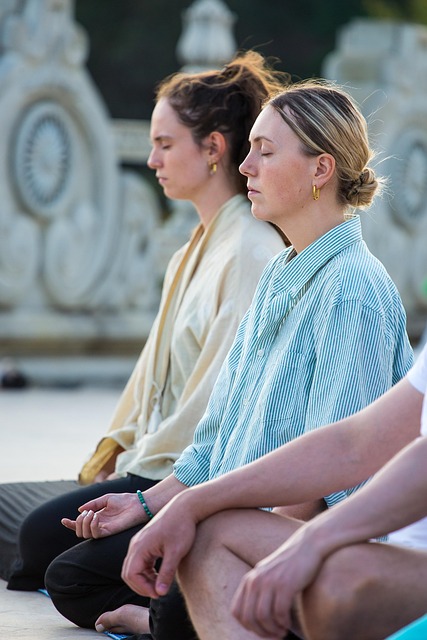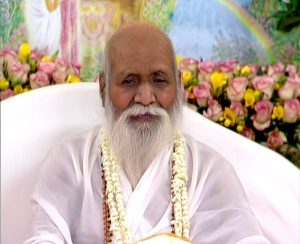 Another study claiming that the long-term practice of transcendental meditation (TM) can do everything from bring down crime rates to slow aging is once again making the news – and it’s raising the same questions that have plagued this theory for decades.
Another study claiming that the long-term practice of transcendental meditation (TM) can do everything from bring down crime rates to slow aging is once again making the news – and it’s raising the same questions that have plagued this theory for decades.
For those who have never heard of it, the Maharishi Effect is named after Maharishi Mahesh Yogi, (1918-2008), best known as the guru to the Beatles and other famous people such as Shirley MacLaine and Joe Namath who shot to fame in the 1960s. He introduced TM to the West and made a fortune spreading the practice around the world.
The term “Maharishi Effect was his creation and refers to the belief that if a certain percentage of the population (1% or more) practices transcendental meditation, it can have a positive effect on society and reduce rates of crime and violence.
Transcendental meditation is an eastern mental exercise that consists of blanking the mind by repeating a mantra for 20 minutes, twice a day.
FoxNews.com is reporting on the latest study purporting proof of the Maharishi Effect by researchers at Maharishi International University (MIU), which was founded by the Maharishi, the University of Siegen, and the Uniformed Services University of the Health Sciences. Researchers claim the study showed that the long-term practice of TM can significantly alleviate stress and slow down aging.

Maharishi Mahesh Yogi (191? – 2008) Photo courtesy of Wikicommons Images, Global Good News, CC BY-SA 3.0
“These results support other studies indicating that the transcendental meditation technique can reverse or remove long-lasting effects of stress,” co-author Kenneth Walton, a senior researcher at MIU, told Fox News Digital.
Two groups participated in the study, one group ranging in age from 20 to 30 years, and another ages 55 to 72. One half of the participants used TM while the control group did not.
Researchers analyzed the expression of genes linked to aging and found the group who practiced TM had lower expression of genes associate with inflammation and aging.
Cognitive function using EEG testing was also conducted and researchers found that older TM practitioners had faster processing speeds.
“The findings around cognitive function are particularly exciting,” said co-author Frederick Travis, PhD, head of faculty at Maharishi International University, in a press release. “Both younger and older TM practitioners showed higher scores on the BIS compared to non-meditators, while the older meditators performed on par with young controls,” he stated.
Finally, hair cortisol concentration and cortisone were measured. Cortisol plays a key role in the body’s response to stress with high levels being associated with many age-related health issues, including cognitive decline.
“The reduced cortisol-to-cortisone ratio in meditators suggests they have more adaptive reserve, more resilience, contributing to overall health and longevity,” Walton explained.
As promising as it sounds, this study is receiving the same criticism as others that proclaimed truth of the so-called “Maharishi Effect” – flawed methodology.
In this case, the lack of a placebo control group and the fact that most subjects had been practicing TM for many years and lived in the same geographic location in southeast Iowa where the university is located.
These are serious problems. For example, as this article states, most of the participants were from Fairfield, Iowa where the University is located – a city that has had an estimated 2,000-2,500 active meditators in a population of 10,000 for decades. This means Fairfield has anywhere from 20 to 25 times the necessary 1 percent of the population needed to create the ideal society, and yet the crime statistics of Fairfield do not indicate a Maharishi Effect.
CrimeGrade.org currently gives Fairfield, Iowa a “D” grade for crime with the rate of 40.11 per 1,000 residents in a typical year.
“The D grade indicates that the rate of crime is higher than that of the average US city,” they report. “Fairfield ranks in the 17th percentile for safety, meaning it is safer than 17% of cities but less safe than 83%.”
Another obvious red flag is the fact that this study, along with hundreds of others, were primarily performed by the TM organization or by people they sponsor which points to a serious bias problem.
Other criticism of these studies, and the TM studies they cite, include “allegations of suppression of negative evidence, of fraud and of ‘gross scientific incompetence,’ lack of double-blind controls, refusal to submit raw data, failure to control for set effects, failure to control for expectancy of relief, failure to control for placebo/suggestible-prone subjects, and others.”
TM-EX, a group of former TM practitioners, also reports that “Maharishi affiliated researchers consistently use selection bias in collecting their research data…selecting only data that is favorable to the movement claims.”
In spite of so much convincing evidence to the contrary, proponents insist that more than 500 studies, including those from leading universities such as Harvard and Princeton, have confirmed it.
As this article states, “the evidence suggests no such ‘effect’ exists or could exist. Part of the problem stems from the definition of ‘science’ endorsed by Maharishi…which is so broad that almost anything can be proven ‘scientifically.’ Of greater concern than the movement’s faulty definition and false claims are the negative effects of TM, which may include a variety of adverse physical and psychological consequences for meditators.”
Even after at least thirty years of research, the Maharishi Effect remains nothing more than an unproven assertion.
© All Rights Reserved, Living His Life Abundantly®/Women of Grace® http://www.womenofgrace.com
Send your New Age questions to newage@womenofgrace.com










